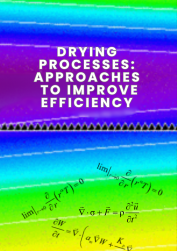On the issues of optimization and regulation of the convective drying process of materials in drying units
Keywords:
Mathematical model, drying, electroosmotic drying, unilateral drying, bilateral drying, isothermal drying, drying kinetics, convection, diffusion, heat and mass transfer, capillary-porous material, capillary effects, continuum thermodynamics, moisture, moisture transport, multi-component system, phase, phase transition, structural model, ponderomotive force, sustainable technology, dispersed materials, gas-suspended state, fluidization, stress, optimization, deformation, anisotropy, numerical methodsAbstract
The chapter presents the main approaches to optimizing and regulating the drying process of materials, taking into account the structural characteristics and operating principles of drying equipment. An essential factor in optimizing such processes is the consideration of the drying object and the mathematical methods used to describe drying problems. To this end, widely applied practical methods of mathematical modeling of capillary-porous and dispersed materials are analyzed, along with the specific features of models that describe heat and mass transfer in such materials.
Particular attention is given to the role of diffusion and thermo-diffusion mechanisms in moisture transfer regulation. Optimization strategies are developed using fundamental drying principles, where the Kirpichov criterion provides a quantitative assessment of moisture transport dynamics, while Nusselt numbers serve as key parameters for controlling temperature gradients and ensuring efficient moisture removal. Additionally, the Postnov criterion is used as a means of evaluating the balance between temperature gradients and moisture content distribution, helping to prevent excessive stress accumulation that may lead to cracking. The study further explores empirical relationships between these criteria and essential process parameters, including moisture content, temperature, and airflow velocity, to enhance drying efficiency and maintain structural integrity.
The study investigates the peculiarities of constructing mathematical models of non-isothermal moisture transfer and deformation during the drying of capillary-porous, dispersed, and fractal-structured materials from the perspective of continuum mechanics, mixture theory, and statistical approaches. This allows for the broadest possible range of model implementations, accounting for the anisotropy of thermomechanical properties, elastic and viscoelastic behavior, material shrinkage, and other relevant factors.

DRYING PROCESSES: APPROACHES TO IMPROVE EFFICIENCY
Downloads
Pages
Published
Categories
License

This work is licensed under a Creative Commons Attribution-NonCommercial-NoDerivatives 4.0 International License.

